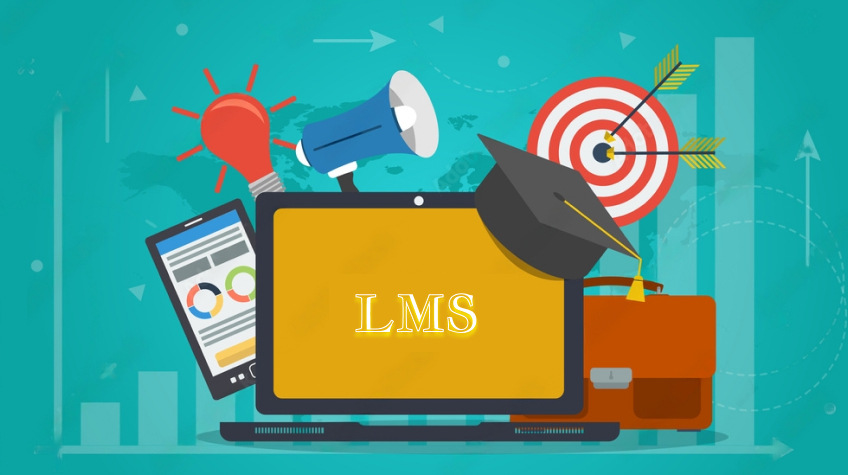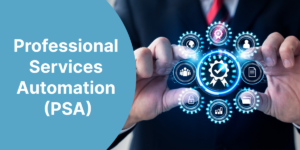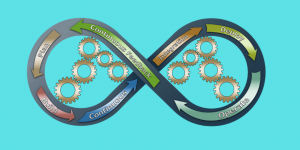
In today’s fast-paced business world, continuous learning and professional development are critical for staying competitive and maximizing employee potential. To achieve this, many businesses are turning to Learning Management System (LMS) software as a powerful solution to streamline and enhance their training efforts.
This article will explore the key steps and considerations for successfully implementing LMS software in your business.
The Soaring Popularity of LMS in Modern Businesses
In recent years, LMS has witnessed a remarkable surge in popularity across modern businesses. According to MarketsandMarkets, the LMS market is expected to grow to $43.6 billion by 2027 at a compound annual growth rate (GAGR) of 18.4%.
Organizations of all sizes and industries recognize the immense benefits of implementing an LMS to enhance their training and development initiatives. Let’s delve into the reasons behind LMS’s widespread adoption and growing popularity in the corporate world
- Cost-Effectiveness: LMS implementation significantly cuts training expenses. LMS provides a centralized platform, unlike costly in-person sessions with venue and printing costs. Additionally, it scales easily to train numerous employees simultaneously without extra expenses.
- Enhanced Learning Experience: LMS platforms engage learners with interactive features like gamification and quizzes. Engaging video content motivates active participation and boosts knowledge retention, leading to higher training success rates.
- Real-Time Progress Tracking: LMS enables real-time monitoring of individual and group progress. Managers gain insights into learners’ performance, identifying strengths and areas for improvement. Data-driven analytics help tailor training content for maximum impact.
- Continuous Learning and Skill Development: LMS fosters a culture of constant learning. Employees access diverse courses and resources, empowering skill development and keeping them updated with industry trends, benefiting individuals and the organization.
Integration with Existing Systems: Modern LMS platforms seamlessly integrate with other business tools like HR management and performance evaluation systems. This streamlines administrative tasks, simplifying user management and reporting for efficient training program management.
Compliance and Certifications: For regulated industries, LMS offers a structured framework for delivering compliance courses and tracking employee certifications. Detailed records ensure businesses remain compliant with industry standards and regulations.
Now that we have studied the benefits let’s move on to the implementation.
Step-by-step Approach to Implementing LMS
Implementing an LMS in your business requires a well-structured approach to ensure seamless and successful integration. We outlined the key steps you should follow when implementing an LMS to maximize its effectiveness and impact on your organization’s training initiatives.
So, explore the following
1. Assess Training Needs and Goals
Before diving into any LMS implementation, conducting a thorough assessment of your organization’s training needs and goals is essential. Identify the skill gaps among your employees and determine the specific learning objectives you want to achieve through the LMS.
This assessment will be the foundation for tailoring the LMS platform to effectively address your business’s unique requirements.
2. Research and Select the Right LMS Software
With an understanding of your training objectives, it’s time to research and choose the right LMS software that aligns with your organization’s needs.
Consider user-friendliness, scalability, reporting capabilities, mobile accessibility, and integration with existing systems. Additionally, conducting an LMS comparison to assess various platforms’ features, functionalities, and suitability for your organization’s specific needs becomes crucial.
3. Involve Key Stakeholders
Successful LMS implementation requires support from key stakeholders across your organization. Involve representatives from HR, IT, training departments, and even senior management to ensure the LMS initiative gains buy-in and support from all levels. Engaging stakeholders early on will help you address potential concerns and provide a smooth adoption process.
4. Customize the LMS Platform
One size does not fit all when it comes to LMS solutions. Customize the LMS platform to align with your organization’s branding, culture, and training content. Tailor the user interface to enhance the learning experience and make navigation intuitive for employees. This personal touch will make the LMS feel like a natural extension of your company’s learning culture.
5. Create Content Development and Migration
An LMS is only as effective as the content it delivers. Develop engaging and interactive training content that caters to different learning styles. Consider using a mix of multimedia elements like videos, infographics, and quizzes to keep learners engaged. If your organization already has training content, ensure seamless migration to the new LMS platform without compromising quality.
6. Conduct Training and Onboarding
Preparing employees to use the new LMS is crucial for successful implementation. Provide comprehensive training and onboarding sessions to familiarize them with the LMS’s features and functionalities. Offer ongoing support and resources to address any questions or concerns that may arise during the learning process.
7. Conduct Testing and Quality Assurance
Conduct thorough testing and quality assurance before launching the LMS platform to all employees to identify and rectify potential issues. Test the system’s functionality, security, and compatibility with various devices and browsers. This step ensures a smooth and glitch-free experience for your workforce.
RELATED: A Step-by-Step Guide to Build a Strong Automated Testing Framework
8. Implement a Communication Plan
Effective communication is key to driving LMS adoption and enthusiasm among employees. Develop a comprehensive communication plan to promote the benefits of the LMS, explain its features, and outline the training opportunities available. Regularly share success stories and updates to keep employees engaged and motivated to use the platform.
9. Monitor and Evaluate
Once the LMS is up and running, establish a system to monitor its performance and effectiveness. Track learners’ progress, engagement rates, and course completion metrics. Use this data to identify improvement areas, assess training initiatives’ impact on business objectives, and make data-driven decisions for future training programs.
10. Create Continuous Improvement
An LMS implementation is an ongoing process. Embrace a culture of continuous improvement by actively seeking feedback from users, trainers, and stakeholders. Use this feedback to refine the LMS platform, update training content, and adapt to changing business needs.
Conclusion
Implementing LMS software in your business can revolutionize how employees learn and grow professionally. You can create a powerful learning environment that drives business success by carefully assessing your training needs, choosing the right LMS, involving key stakeholders, and providing top-notch content and training. Successful LMS implementation is not a one-time event but a continuous journey toward continuous learning and organizational excellence.






